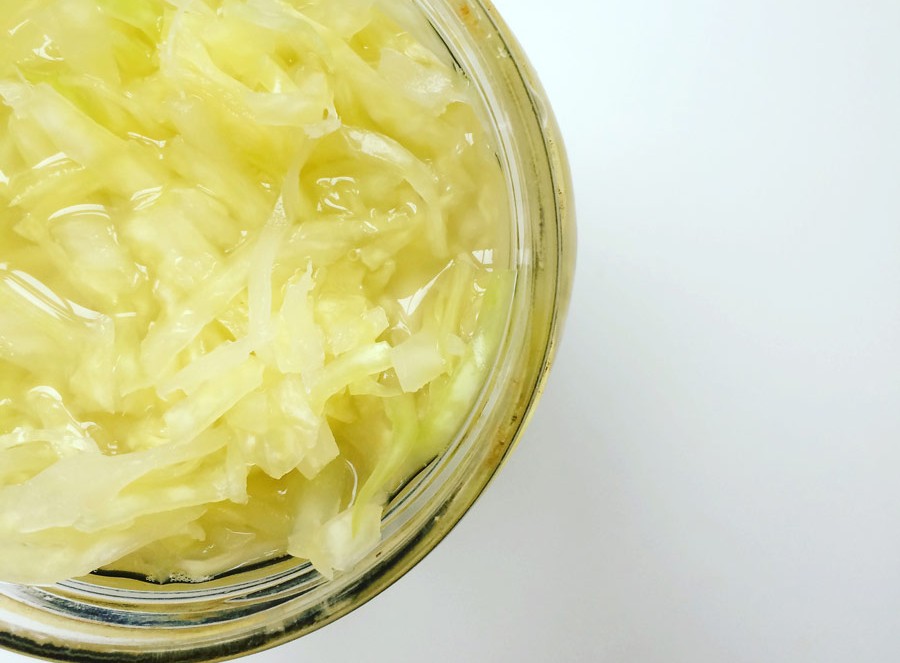
Sauerkraut is fermented cabbage, its a delicious accompaniment to meals ands its also excellent for gut health. Its packed with good bacteria to keep your gut flora topped up which optimises gut and immune function.
Many shop bought versions will have been pasteurised – this means the cabbage will no longer contain beneficial bacteria. So either make your own or buy raw, unpasteurised sauerkraut from health shops and specialist producers.
Ingredients:
1kg organic white cabbage or red cabbage or a mixture of both. Savoy cabbage is also fine to use.
15g Himalayan salt or quality sea salt
Your choice of spices and herbs such as:
2 tsp fennel seeds / 10 juniper berries / bay leaves / 2 tsp caraway seeds / 2 tsp peppercorns
Equipment:
2 x 1 L mason Jars or one big 2L one
1 wooden cabbage tamper stick or a rolling pin or a large pestle
Method:
First, cut the cabbage in half from top to bottom and take out the core, save these for later.
Using a sharp knife or food processor, shred the cabbage finely.
Sprinkle a layer of shredded cabbage into a bowl and sprinkle with some of the salt, add some of your spices/herbs, then continue with another layer of cabbage and more salt and continue until all the cabbage is in the bowl.
The salt will start to release the juices from the cabbage, but you need to give it a helping hand. Scrunch the cabbage with your hands working your way through it to mix everything together and slightly break down the structure of the vegetables. You want to release the water from the cabbage, and to do this requires a good 5-10 minutes of massaging it. To help this process along the way, you can leave the cabbage to stand for 30 minutes or even overnight (covered).
You could use a rolling pin, or some other heavy rounded utensil (I use a heavy duty pestle) to gently break down the cabbage some more and release more water.
Pack vegetables tightly (no air pockets!) into a large mason jar (like this) with a lid.
Press the cabbage right down using your fist and water should rise up above the vegetables. You can buy a special tool called a cabbage tamper to pack the cabbage into your mason jar.
Make sure the cabbage is packed in tightly and allow 2 inches at the top for expansion.
If there isn’t enough liquid (the cabbage needs to be submerged) then top it up with a small amount of filtered water.
Make sure no sauerkraut is above the water line as it will go off.
Pile the cabbage cores on top of the sauerkraut and seal the lid. This should help submerge the sauerkraut beneath the water line.
Leave the jar in a warm, dark place such as the boiler cupboard if you have one or near the boiler. It will take longer to ferment if left in a cool place.
Quickly ‘burp’ the sauerkraut daily to release some gasses and stop the liquid from overflowing from the jar. Stand the jar in a bowl just in case some liquid seeps out as everything expands.
Taste after about 2 weeks or if you can wait until 4 weeks or more then even better. The longer you leave it, the more potent it will be. You will know when its ready as it will taste more tangy.
Once it has been fermenting for a good few weeks on the side you can move it to the fridge where it should keep for a long time.
It goes with EVERYTHING! From curries to salads, stews to soups.Try to eat a portion, daily.




I have a glut of beets and although myself and my kids love them, we have so many, I’d like to try picking/fermenting them. Do you have a recipe for this? I love your sauerkraut one, so thought I’d ask. Many thanks.